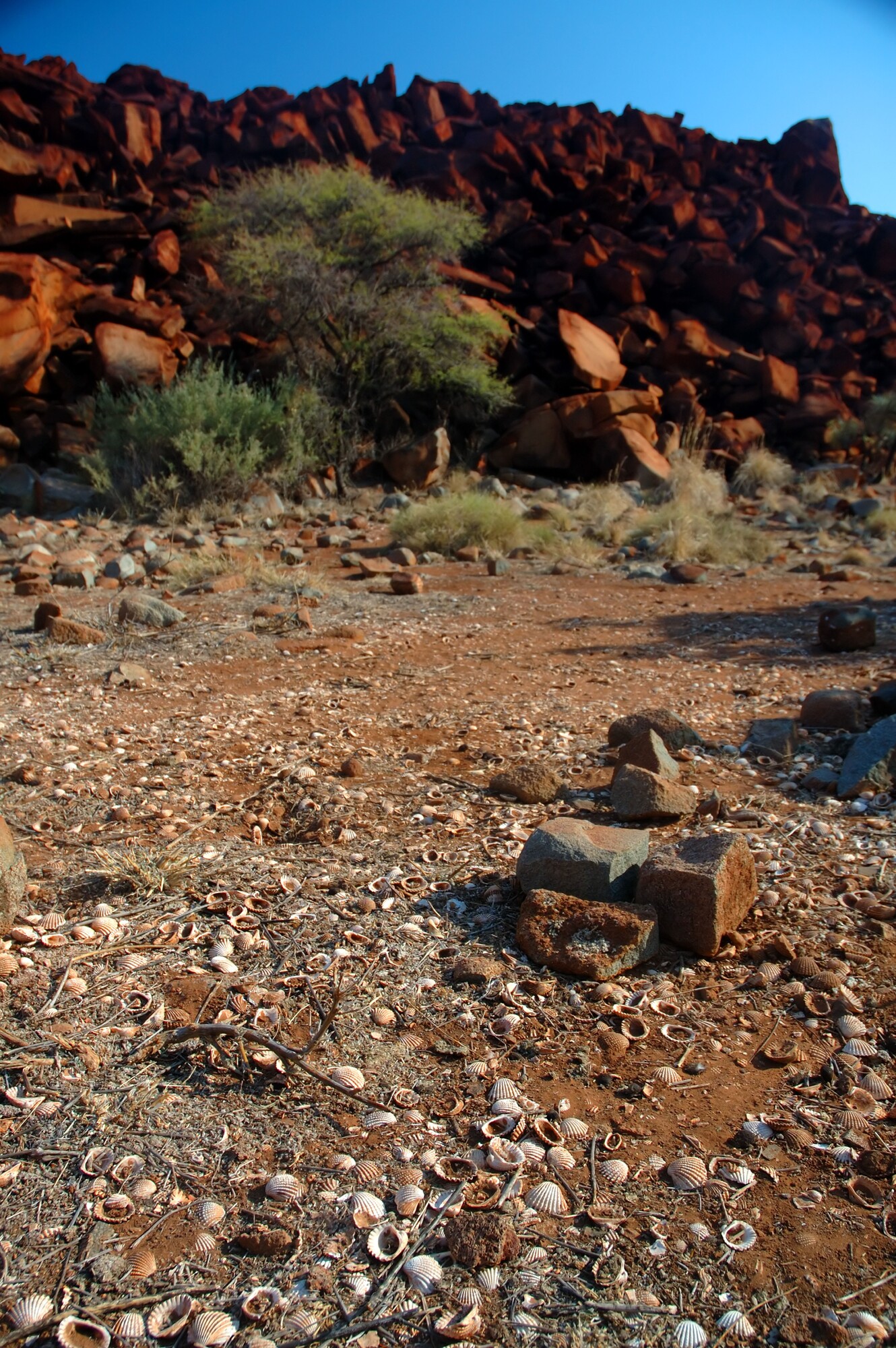The remarkable cultural heritage of the Pilbara made headlines around the world in May 2020 when Rio Tinto blew up one of the region’s ‘most sacred sites’ – a 46,000-year-old Aboriginal rockshelter in Juukan Gorge [33]. This severing of connections to ancestors and country brought ‘incalculable cultural loss, pain and distress’ to the Puutu Kunti Kurrama and Pinikura (PKKP) peoples. The rockshelter was remarkable not only for its antiquity, but for artefacts that included 4,000-year-old fragments of a woven hair belt, with human hair genetically matched to the PKKP.
The deep human history of the Pilbara, extending back about 50,000 years (or more), is best known in the pockets of land investigated for mining exploration. Sites with stone implements – some with hundreds of thousands of artefacts scattered over hundreds of hectares – dominate the archaeological record. There are also quarries, shell middens, scarred trees, stone arrangements, grinding grounds, fish traps, walled niches, burial sites, ceremonial and mythological sites, engraved and painted artworks, as well as rockshelters and caves. Objects made of organic materials – bowls, boomerangs, spears, fishing nets, baskets, digging sticks, resin hafted tools, shields, rafts and decorative and sacred objects – exemplify the adaptive and creative human responses to resources in the Pilbara, but are rarely preserved in the acidic deposits of rockshelters.
One of the oldest dated sites, Boodie Cave on Barrow Island (just outside the Pilbara bioregion), provides evidence of people living on the coast from up to 51,000 years ago to some 7,000 years ago, when rising seas put the island out of reach from the mainland. Food remains, as well as shell ornaments and tools, tell us much about the available resources and the diverse capabilities of the inhabitants. The diet was dominated at different times by coastal and inland species, reflecting the rise and fall of the sea. Prior to the last glacial maximum, when seas were low, the cave may have been used as an inland bivouac to hunt wallabies and wallaroos. As the sea rose, the diet became ‘exceptionally rich’, with fishes, turtles, marine mammals, crabs, more than 40 mollusc species and 13 terrestrial animals.
Inland rockshelters such as Karriyarra and Waturi Jurnti in north-eastern Pilbara also offer glimpses of how people adapted to the highly variable physical and social landscapes of the past 50 millennia. These sites were used intermittently, including through exceptionally harsh times. They have yielded a variety of tools, including some made of bone and baler shell; ochre and tusk shell probably used for ornamentation; and 30,000-year-old paperbark, traditionally used for purposes such as wrapping and carrying food and to swaddle babies. The presence of coastal materials and different types of rocks used for tools may reflect the ‘long-distance socio-economic exchange systems’ that flourished in the past few thousand years.
